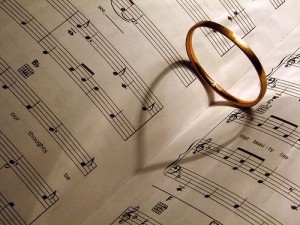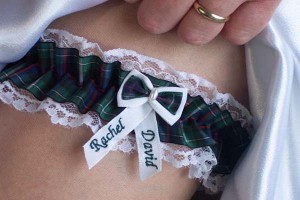 Whether it’s a party, road trip, romantic evening out, or anything in between, the music that is played is truly something that can either make or break the mood and/or the atmosphere – and this is especially true when it comes to wedding music. In previous posts I’ve written about how to find a great wedding DJ or wedding band for the reception, but I have yet to delve down into specific tips regarding the actual music played during the marriage ceremony – until now, that is. The purpose of today’s post is to offer some tips and ideas for not only what wedding music to play, but also when to play it. Whether you are the bride or the mother of the bride, this information is definitely good to know!
Whether it’s a party, road trip, romantic evening out, or anything in between, the music that is played is truly something that can either make or break the mood and/or the atmosphere – and this is especially true when it comes to wedding music. In previous posts I’ve written about how to find a great wedding DJ or wedding band for the reception, but I have yet to delve down into specific tips regarding the actual music played during the marriage ceremony – until now, that is. The purpose of today’s post is to offer some tips and ideas for not only what wedding music to play, but also when to play it. Whether you are the bride or the mother of the bride, this information is definitely good to know!
It matters not whether the wedding is formal, informal, religious or casual, the music must be carefully planned in order to achieve maximum effect. Thoughtfully planned wedding music is the thread that ties together each individual segment of the ceremony. In fact, there are 5 segments of a typical wedding ceremony, each of which demands an appropriate musical element. The 5 segments are, in order of occurrence, the prelude, pre-processional, processional, bride song, and recessional.
The prelude is self-explanatory; it is the hour or so before the ceremony begins. This is typically the time when the guests will arrive. This music should be light and upbeat. The last thing you want is something akin to funeral music playing as your guests arrive! The prelude ends when all the guests have been seated. The next segment is the pre-processional, which generally features important family members walking down the aisle. The pre-processional music should be more formal than the prelude music, but it should still be relatively upbeat – after all, this is supposed to be a happy day, right? The same musical selection should be played during the next segment, the processional, as this is the phase when the bridal party takes its place at that altar. The highlight of the ceremony is typically the bride song, which is when the bride walks down the aisle. To this day, most couples still opt for the traditional “Here Comes the Bride” tune during this segment. Finally, the recessional happens at the end of the ceremony, as the bride and groom exit the venue. The best music accompaniment during this segment is something that is happy and upbeat.
Once you understand the 5 segments of a typical wedding ceremony, the actual choice of music becomes a lot easier. Now, I won’t be recommending any specific tunes here because there are literally millions of pages online that delve into this very subject. So, after you read this post, take 10 minutes and do some quick research. Once you have decided on your specific song selection, the final step is to decide if you will be having live music (instrumental or live band), or a DJ.
Live wedding music in the form of a brass (trumpet, trombone, French horn, etc.) or woodwind (flute, saxophone, clarinet, etc.) instrumental ensemble is generally recommended for an outdoor wedding such as a beach wedding or destination wedding because these categories of instruments produce the best outdoor sound. Conversely, live music in the form of a string & keyboard ensemble (violin, guitar, piano) will sound better indoors due to the acoustical differences between indoor and outdoor space. A DJ would also be more appropriate for an indoor venue versus an outdoor one. With all of that being said, these suggestions are merely guidelines, so the bottom line is that there is no harm in simply going with whatever sound you like best.
Once you have all of these elements figured out, the final step is to hire your musical vendor. If you are willing to pay a little more to reduce your stress over this decision, you could always hire a wedding music coordinator. But no matter what, just make sure you give your musical selection a lot of thought. It’s an important aspect of the wedding, so don’t blow it! Good luck!



Speak Your Mind